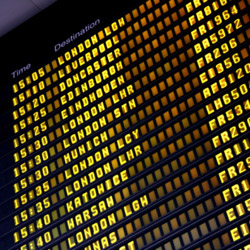
Yet restrictive abortion laws cling on – partly because of Ireland’s close proximity to its neighbouring country. Abortion became legal in Britain in 1967, giving women in Ireland an alternative to the dangerous backstreet operators. Instead, women with unwanted pregnancies discreetly started taking ‘the boat to Holyhead’.
The details of how Britain unwittingly performs this action are set out in statistics from the UK's Department for Health, and the figures from 2013 have just been released. The chart below displays how Irish women compare with the other nationalities that are regularly recorded in the statistics.
In 2013 alone, 67% of the non-resident women come from the Republic of Ireland, such a huge proportion cannot be explained away as emigrant workers stating their address as 'Ireland'. Northern Ireland managed to get an exemption from the 1967 act, so if you include women who reside on the whole island of Ireland, they make up over 80% of the non-resident women coming to England and Wales for abortions.
The numbers are falling in this ten year period, but the reasons for this are complicated and could be due to a variety of social or economic factors that is would be better served by an academic study. Despite this, Irish women still far outstrip any other nationality in all statistics going back over a decade.
The statistics are also susceptible to being an underestimation, Ireland has stigmatised abortion at home meaning some women could give false addresses or the address of a relative living in Britain already. However, it is the best measure available of something the Irish government is unable to record in their own official statistics. The figure for the Republic of Ireland is less than 2% of the total abortions performed in England and Wales, but without the Department of Health statisticians breaking this down, there would no other way of recording the fact that these journeys are made thousands of times a year.
There is no sign of abortion law changing in Ireland any time soon. Even last year’s small change drew huge protests. To understand why the status quo will not change any time soon, it’s important to recognise how Britain provides a release valve for Ireland’s social conservatism.




